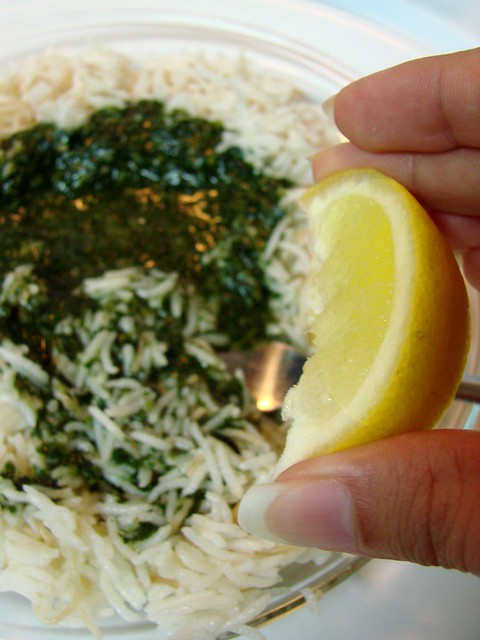Upon posting a few of these shots of the delicious traditional egyptian dish (national dish?) I realized that I hadn't posted or taken any molokhia shots before, which was a shocker considering how it's up there with some of my favourite meals like Dolma (stuffed grape leaves) and stewed bamia (okra in tomato sauce) ..
We'll here it is anyway! The green herby garlicy stew that scares a lot of people off by it's gooey slimy consistency but you have to try it, it's delicious!
If there is no goo then it's just not molokhia, cooking the leaves beyond a certain temperature destroys the goo and you don't want that but it is realistically the simplest thing in the world to make and every time I make it I'm reminded of how easy it is.
Steps:
-Boil some chicken in stock or water
-Flake the chicken meat and set aside.
-Add the frozen purchased thawed molokhia leaves to the hot stock and melt it down cooking just until the mixture is all warmed up if the greens are still "cold" and remove from the heat.
- In a teeny sauce pan grate a few cloves of garlic, add a bit of butter, samna (ghee) or oil and 2 tbsp of dry ground corriander spice and sauté on medium low until garlic is fragrant but not burnt.
- Dump the garlic spice blend into the molokhia stew and mix it up. It's ready to serve with rice! I always squeeze some lemon over it too and pickled peppers, turnips or any pickle goes well on the side.
Molokhia can be purchased from middle eastern grocery stores in the west, it is frozen in a thin slab, you can get it ground up (which is what is required for this recipe) or in leaves which is used in Palestinian, Lebanese and Syrian recipes.
If you want to try growing it by all means it would be a fun experiment, the plant grows tall and is a bit "weed" like, the leaves are also used in Japanese cooking which I learned recently. My mother used to say that we had a garden filled with fresh molokhia when I was a little girl growing up in Pakistan and in my late teens in Yemen where it is also popular (not sure how they cook it though) I purchased some fresh and tried my hand at it. The issues with that is the washing, grinding it smooth and fine into a paste, which in egypt is done traditionally using a Mezzaluna knife, which looks like a crescent with two handles,



No comments:
Post a Comment